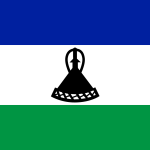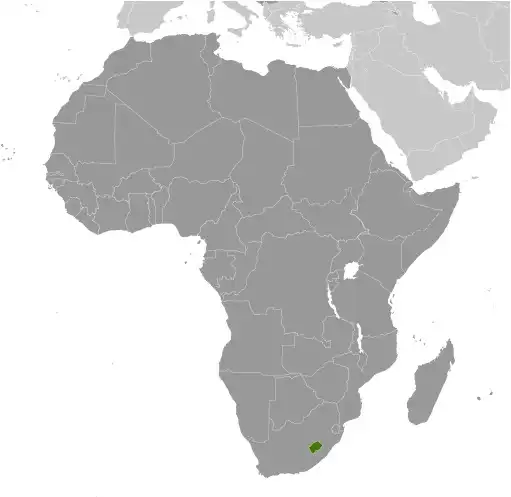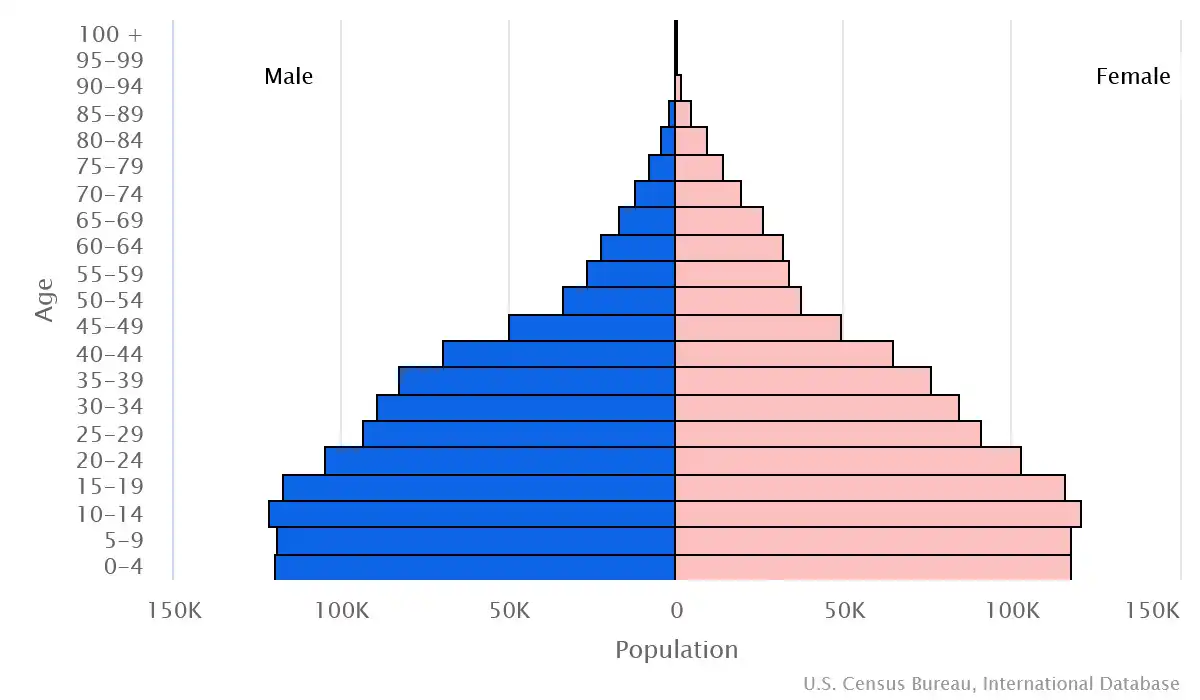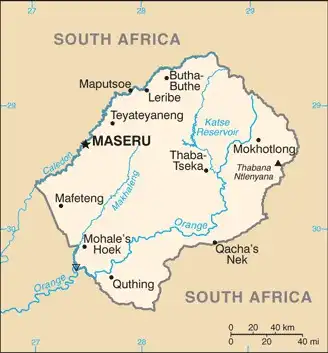
Lesotho
Veröffentlicht: 19. June 2022 - Letztes Update: 28. February 2025
Country Data Dashboard

Population
2,227,548
Growth: 0.76% (2024 est.)
GDP
$2.118 billion
(2023 est.)
Area
30,355 sq km
| Government type: | parliamentary constitutional monarchy |
| Capital: | Maseru |
| Languages: | Sesotho (official), English (official), Phuthi, Xhosa, Zulu |
People & Society
Ethnicity (Kwena & Nguni (Hlubi and Phuthi)
Religion (2014 est.)
Age structure

Economy
Economic overview
lower middle-income economy surrounded by South Africa; environmentally fragile and politically unstable; key infrastructure and renewable energy investments; dire poverty; urban job and income losses due to COVID-19; systemic corruption
Real GDP (purchasing power parity) in Billion $
Real GDP per capita in $
Exports & Imports in billion $
Top 5 Import Partner in 2022 (94%)
Top 5 Import Commodities in 2022
- refined petroleum ⛽
- fabric 👕🧶
- cotton 🧵
- garments 👕
- electricity ⚡
Top 5 Export Partner in 2022 (94%)
Top 5 Export Commodities in 2022
- garments 👕
- diamonds 💎
- water 💧
- wool 🧶
- power equipment 🔋
Geography
Map

Area
Natural resources
- water 💧
- agricultural and grazing land 🌾
- diamonds 💎
- sand 🏜️
- clay 🧱
- building stone 🪨
Climate
temperate; cool to cold, dry winters; hot, wet summers
Historical Background Information
Paramount chief MOSHOESHOE I consolidated what would become Basutoland in the early 19th century and made himself king in 1822. Continuing encroachments by Dutch settlers from the neighboring Orange Free State caused the king to enter into an 1868 agreement with the UK that made Basutoland first a British protectorate and, after 1884, a crown colony. After gaining independence in 1966, the country was renamed the Kingdom of Lesotho. The Basotho National Party ruled the country during its first two decades. King MOSHOESHOE II was exiled in 1990, returned to Lesotho in 1992, was reinstated in 1995, and was then succeeded by his son, King LETSIE III, in 1996. Constitutional government was restored in 1993 after seven years of military rule.
In 1998, violent protests and a military mutiny following a contentious election prompted a brief but bloody intervention by South African and Batswana military forces under the aegis of the Southern African Development Community (SADC). Subsequent constitutional reforms restored relative political stability. Peaceful parliamentary elections were held in 2002, but the National Assembly elections in 2007 were hotly contested, and aggrieved parties disputed how seats were awarded. In 2012, competitive elections saw Prime Minister Motsoahae Thomas THABANE form a coalition government -- the first in the country's history -- that ousted the 14-year incumbent, Pakalitha MOSISILI, who peacefully transferred power the following month. MOSISILI returned to power in snap elections in 2015 after the collapse of THABANE’s coalition government and an alleged attempted military coup. In 2017, THABANE returned to become prime minister but stepped down in 2020 after being implicated in his estranged wife’s murder. He was succeeded by Moseketsi MAJORO. In 2022, Ntsokoane Samuel MATEKANE was inaugurated as prime minister and head of a three-party coalition.
In 1998, violent protests and a military mutiny following a contentious election prompted a brief but bloody intervention by South African and Batswana military forces under the aegis of the Southern African Development Community (SADC). Subsequent constitutional reforms restored relative political stability. Peaceful parliamentary elections were held in 2002, but the National Assembly elections in 2007 were hotly contested, and aggrieved parties disputed how seats were awarded. In 2012, competitive elections saw Prime Minister Motsoahae Thomas THABANE form a coalition government -- the first in the country's history -- that ousted the 14-year incumbent, Pakalitha MOSISILI, who peacefully transferred power the following month. MOSISILI returned to power in snap elections in 2015 after the collapse of THABANE’s coalition government and an alleged attempted military coup. In 2017, THABANE returned to become prime minister but stepped down in 2020 after being implicated in his estranged wife’s murder. He was succeeded by Moseketsi MAJORO. In 2022, Ntsokoane Samuel MATEKANE was inaugurated as prime minister and head of a three-party coalition.
